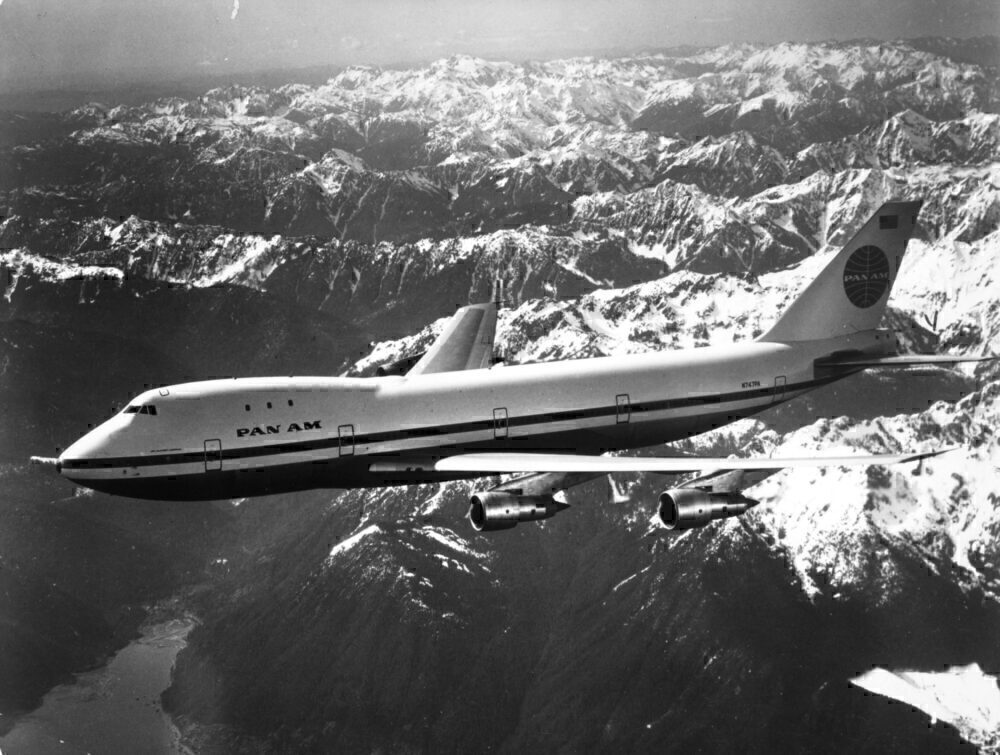The North Atlantic Ocean represents one of the world’s busiest sets of aerial corridors. With the two key markets of Europe and North America at either end, it forms a lucrative pathway for both passenger and cargo-carrying airlines. But how do aircraft remain on course and suitably separated in this busy area with minimal radar coverage? The key to this operation lies in the North Atlantic Organised Track System.

Constantly changing
The North Atlantic Organised Track System (NAT-OTS) is known in shorthand as North Atlantic Tracks, or even as NATs. The term refers to a collection of pre-determined routes across the North Atlantic Ocean that are to be flown by aircraft traveling in either direction between Europe and North America on any given day. Aircraft flying along these corridors generally cruise with altitudes between 29,000 and 41,000 feet.
The Shanwick (a portmanteau of Shannon, Ireland and Prestwick, Scotland) and Gander (Canada) control centers dictate the NATs. These facilities control entry and movement along the busy transatlantic corridor, but the exact routes used change every day. This is because they are defined by ever-changing meteorological factors in the North Atlantic. A similar system exists for transpacific flights, known as the Pacific Organised Track System (PACOTS)

The most important of these is the ‘jetstream,’ which causes eastbound aircraft to experience tailwinds. This is why the Europe-bound rotation of a transatlantic airline service generally has a noticeably shorter scheduled flight time. As such, the NATs are designed to maximize this tailwind’s effects while reducing the impacts of headwinds on westbound aircraft. The result is a series of paths that are optimized to reduce flight time.
Aircraft separation along the NATs
The Gander and Shanwick control centers update the North Atlantic Tracks twice a day. They do so in consultation with stakeholders such as air traffic control (ATC) agencies and the airlines themselves. The updates consider factors such as changes to the winds en route, and the bulk of the traffic flow.

The early parts of the day see more westbound traffic, while westbound flights primarily operate overnight. Carriers that frequently fly transatlantic tend to make the control centers aware of their preferred routes in advance. As these tracks are pre-determined, aircraft can traverse them without requiring contact with ATC. This is a beneficial factor in an area with minimal coverage.
As well as the exact paths that aircraft take, there is also the question of how they are separated. Since 2015, certain NATs have used reduced lateral separation minima. This has seen the separation between these corridors, known as RLAT tracks, halve from 60 NM (110 km / one degree of latitude) to 30 NM (55 km / 0.5 degrees).
Stay informed: Sign up for our daily aviation news digest.

Aircraft under reduced lateral separation minima also only require 1,000 feet of vertical separation, rather than the standard 2,000 feet that generally applies at FL290 or above. Overall, this allows more aircraft to fly efficiently and safely across the North Atlantic, despite the minimal coverage.
Effects of time-optimized routes
As Concorde flew at altitudes of up to 60,000 feet, it was well out of the way of regular traffic during its supersonic journeys between Europe and North America. As such, it was not bound by North Atlantic Tracks in the same way that regular subsonic airliners are.
With weather changes at such altitudes being minimal, Concorde generally flew the same transatlantic routes every day. Cruising at speeds of up to Mach 2.04 (1,354 mph / 2,179 km/h), the legendary British-French jet could cross the Atlantic in as little as three hours.

Speaking of rapid journeys between Europe and North America, the time-optimized routes that NATs produce can lead to some rapid transatlantic crossings under favorable wind conditions.
For example, last February, the strong winds of Storm Ciara caused a British Airways Boeing 747 to fly from New York to London in just four hours and 56 minutes. This record time saw it arrive a full 80 minutes ahead of schedule!
Potential inefficiencies
While North Atlantic Tracks are carefully considered, they do not represent a perfect system. According to Professor Paul D. Williams, Professor of Atmospheric Science at the University of Reading, recent research has shown that “transatlantic flights burn up to 16% more fuel because of [its] constraints.”

A study carried out by Professor Williams and his colleagues examined flights between New York and London over a three-month period. This spanned from December 1st, 2019 to February 29th, 2020. This includes the busy Christmas period, and, as such, the team will have had plenty of examples to work with. The study claims that “changes to current practice could significantly reduce fuel use and, hence, greenhouse gas emissions.”
Optimized efficiency through deviation
The team’s argument focuses on savings that could occur if aircraft could deviate from the current tracks. It claims that this may soon become a reality, as satellite coverage in the region increases. As we have established, the North Atlantic Tracks on a given day are generally dictated by wind fields in the region.

The study calculated minimum time routes using optimal control theory, and compared them to the existing North Atlantic Tracks. It found that the NATs, which use wind fields primarily to reduce flight time, are “typically several hundred kilometers longer” than those which would be most optimal in terms of fuel consumption.
Professor Williams et al. also state that a flight’s “total fuel burn and, hence, the emissions (including CO2) are proportional to [its] ‘air distance.’” Air distance is the product of a flight’s airspeed and journey time instead of its raw distance in kilometers or nautical miles.
Significant savings
The study claims that savings by taking ‘fuel-optimized routes’ could “range from 0.7% to 7.8% when flying west and from 0.7% to 16.4% when flying east.” Therefore, the study argues that, if such changes were to be implemented, significant short-term savings could be made by the industry in terms of fuel consumption.

This would represent a meaningful and immediate impact to the industry’s emissions. At a time when commercial aviation is doing its best to keep up with modern, eco-friendly trends, this could help it to increase its favor among critics in the environmental lobby.
In contrast, technologically-driven improvements to fuel efficiency are more incremental and take longer to develop. As coverage in the North Atlantic increases over the coming years, it will certainly be fascinating to see what this means for the North Atlantic Tracks’ future. However, for now, they will continue to keep aircraft along this busy and lucrative corridor safely separated, while ensuring the quickest possible passages ‘across the pond.’
Did you know about the North Atlantic Organised Track System? Have you ever flown on a transatlantic route? Let us know your thoughts and experiences in the comments!
[ad_2]
Source link


